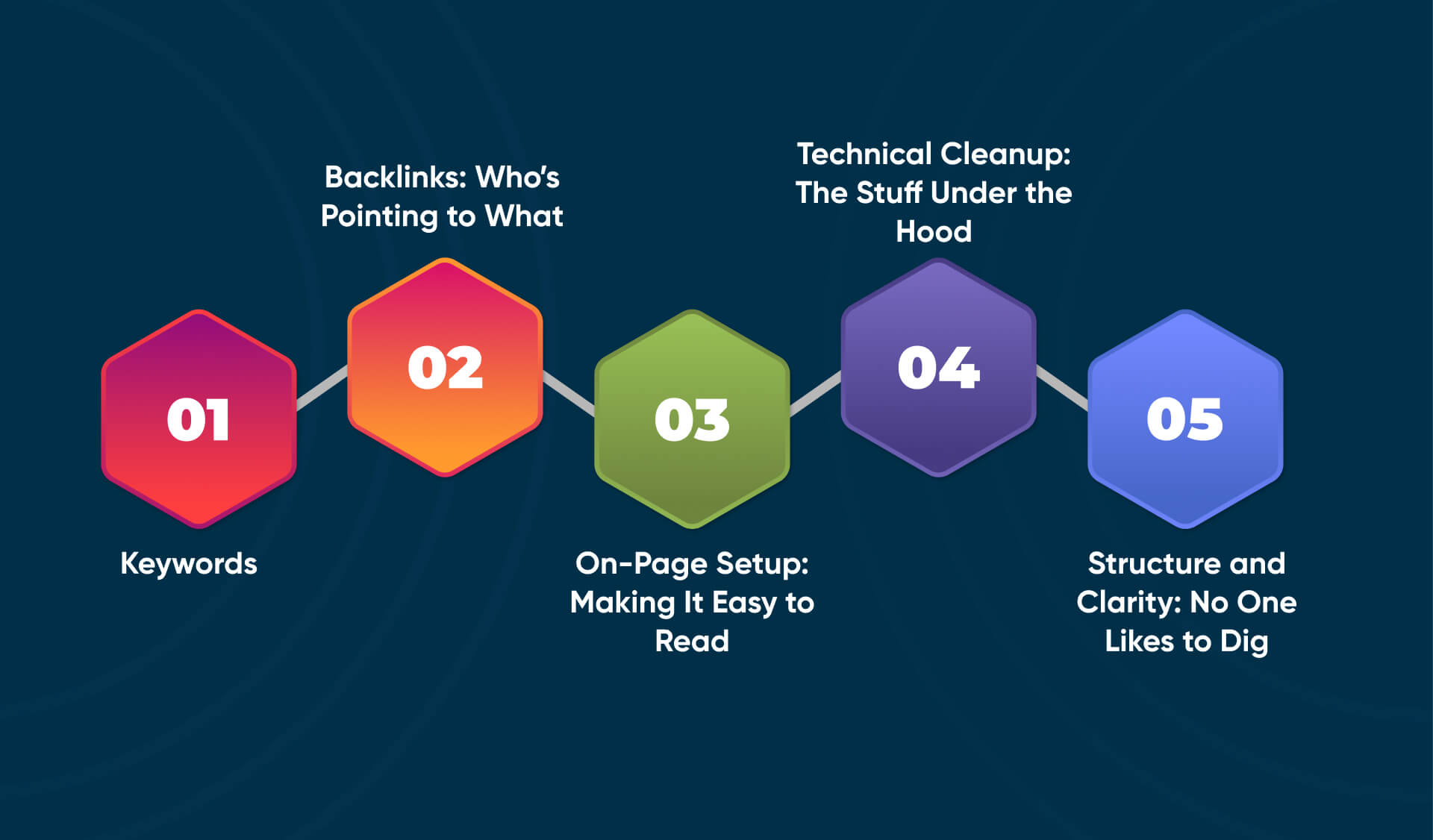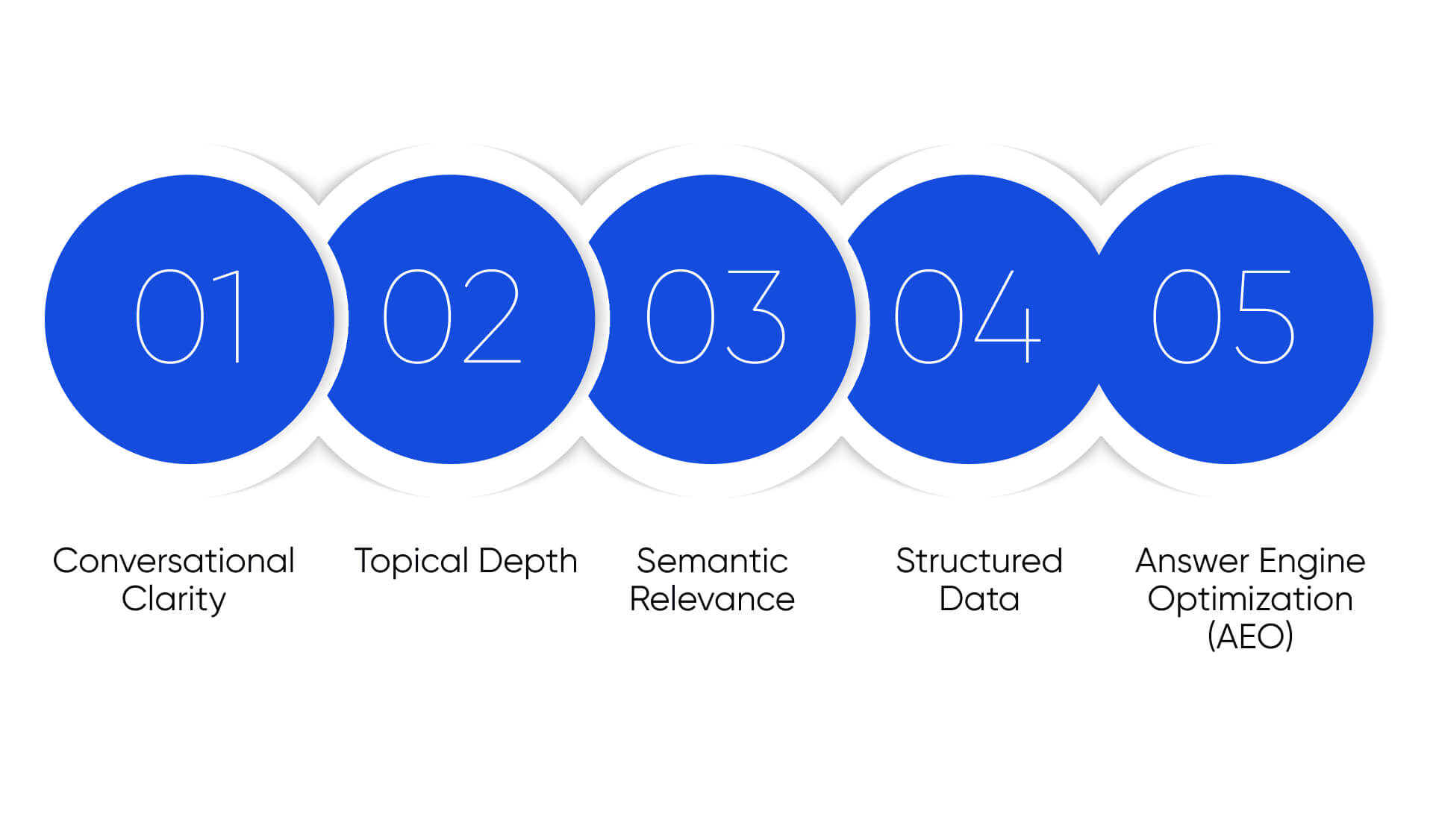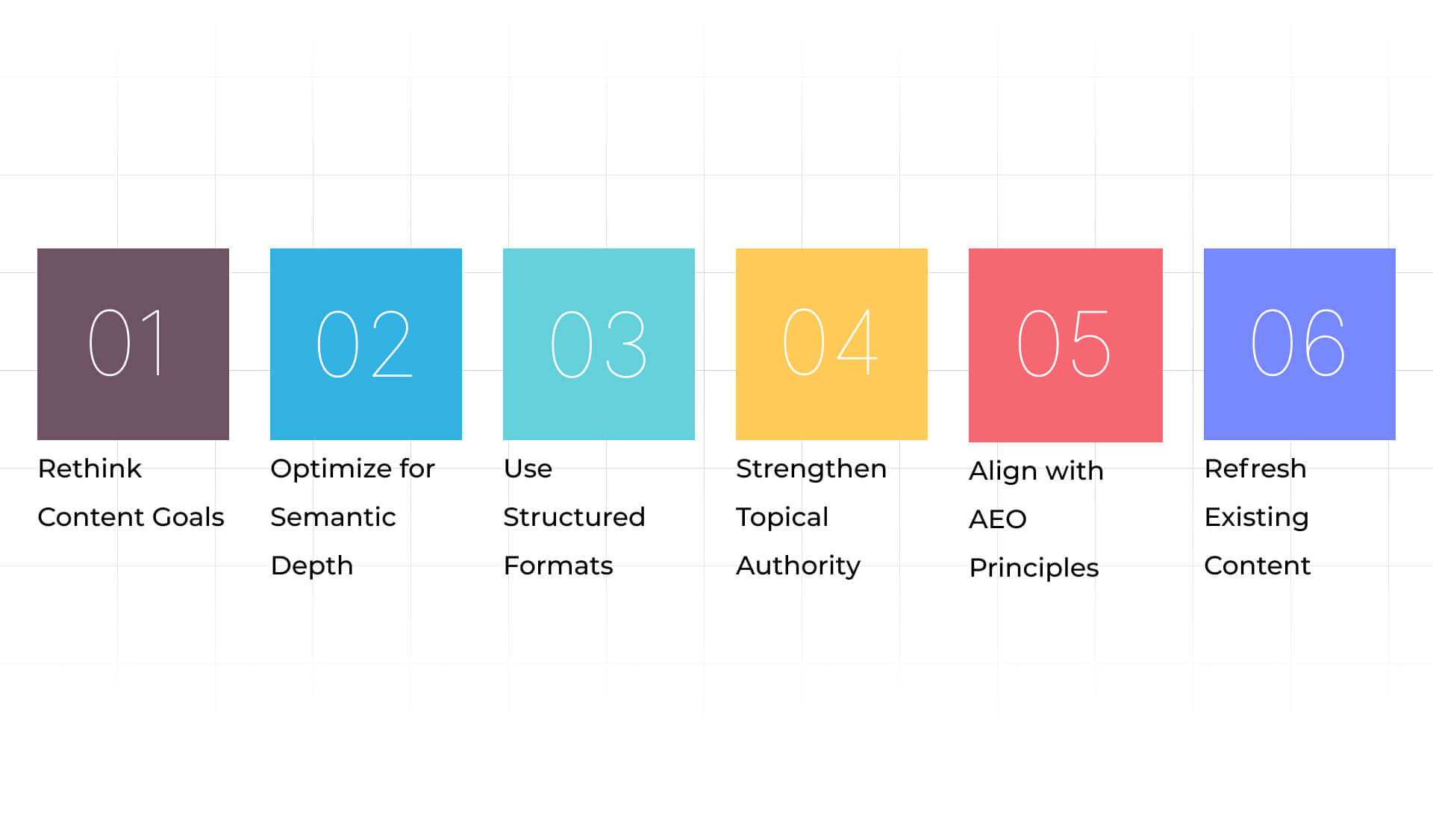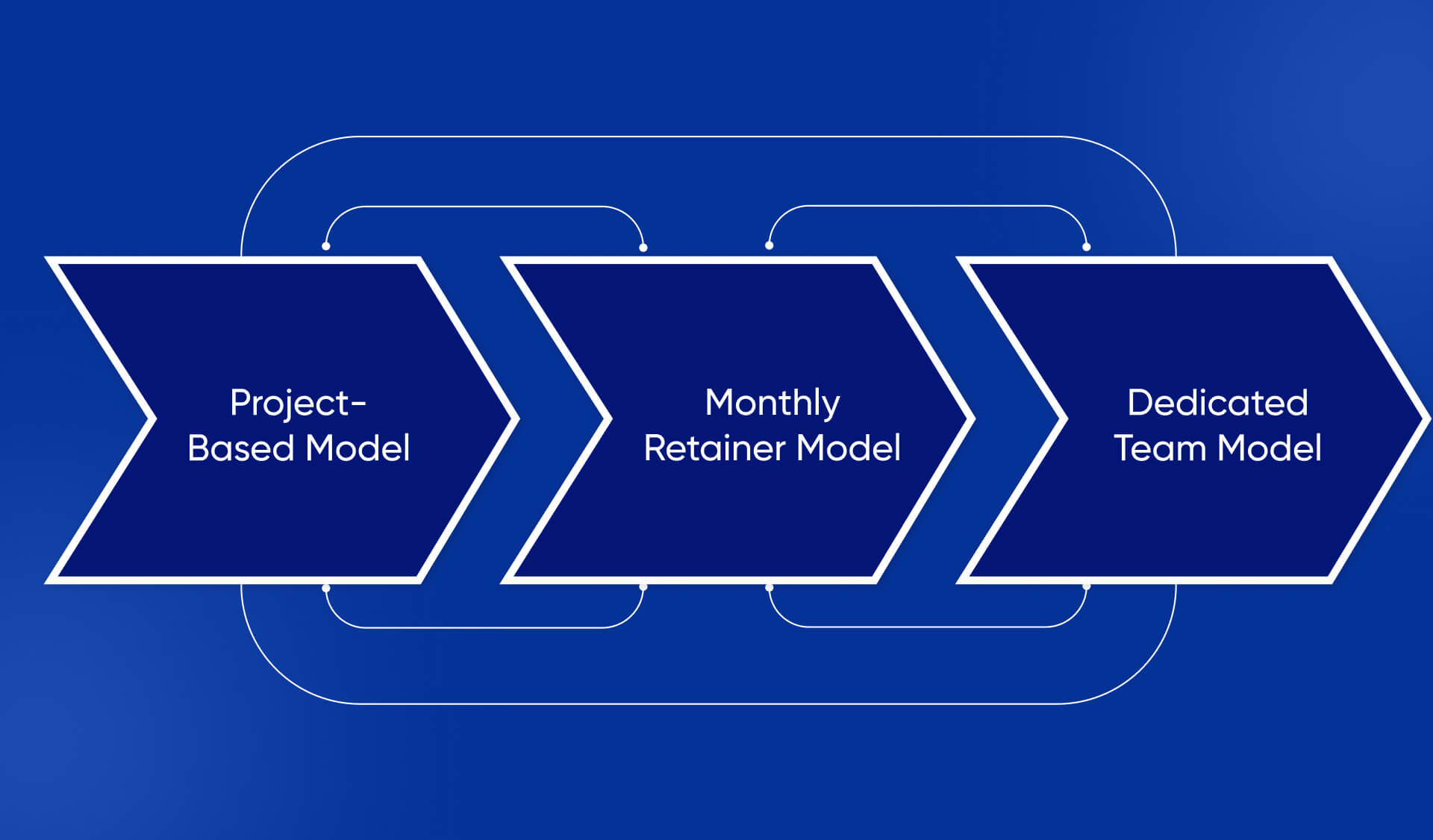How Does Generative Engine Optimization (GEO) Differ from Traditional SEO

 9.5 min
9.5 min
Search engines have never stayed still. From the early days of keyword stuffing and meta tag manipulation to today’s sophisticated, AI-driven algorithms, the world of search has seen significant transformations. The rise of large language models (LLMs) like ChatGPT, Google Gemini, Perplexity, and others marks a pivotal shift. These aren’t just engines that fetch pages; they generate answers.
With this shift, businesses and content creators are facing a new reality: traditional SEO alone may no longer be sufficient. A new discipline, Generative Engine Optimization (GEO) has emerged to align with how generative engines understand, process, and surface information.
Understanding this evolution is essential for building future-ready digital strategies.
Curious If GEO Will Replace SEO Soon?
Understand the real shift behind AI-driven rankings and how to stay ahead. Know what others miss before your competition does.
Get Expert Insights via Form Submission
What Is Traditional SEO

Traditional SEO, or Search Engine Optimization, is the process of improving a website’s visibility in search engine results pages (SERPs), primarily on platforms like Google and Bing. It has been the foundation of digital discoverability for over two decades.
Core Components of Traditional SEO
Ask anyone who’s worked in digital marketing for a while, and they’ll tell you SEO has layers. It’s not just about throwing keywords into a blog or chasing backlinks anymore. It’s a mix of strategy, structure, and a bit of trial and error. Here’s how the basics still hold up:
Keywords
Still the Starting Point: Before anything gets published, there’s research. What are people typing into Google? What questions are they asking? Picking the right words is part intuition, part data. The goal isn’t to overload content with search terms it’s to understand intent and reflect that naturally. Sometimes, that means using the exact phrase. Other times, it’s about context.
Backlinks
Who’s Pointing to What: When a trusted site links to a page, that matters. It tells search engines that the content is worth referencing. But this isn’t about buying links or joining sketchy directories. Real authority comes from getting mentioned in the right places industry blogs, news sites, or partners that already have search value.
On-Page Setup
Making It Easy to Read: A good page isn’t just about the words it’s how those words are arranged. Headings break things up. Internal links help visitors move through the site. Meta tags don’t show on the page but still play a part in how results appear. These elements help both users and search engines understand what’s important.
Technical Cleanup
The Stuff Under the Hood: It’s easy to ignore site speed or broken links until traffic starts to dip. But these things matter more than most realize. Search engines notice when a page is slow or doesn’t load well on mobile. A clean backend, secure, fast, and crawlable can make all the difference in long-term visibility.
Structure and Clarity
No One Likes to Dig: People skim. They want answers fast. That’s why structure matters. Content that’s scattered or buried under fluff rarely performs. Clear sections, bullet points when needed, and an obvious flow help users find what they need and help search engines figure out what the page is about.
The success of traditional SEO depends on how well content is indexed, ranked, and displayed by search engine crawlers. Google’s algorithm updates over time, such as Panda, Penguin, BERT, and Helpful Content, have refined how relevance and quality are assessed, but the core model remains rooted in crawling, indexing, and ranking.
What Is Generative Engine Optimization (GEO)?

GEO, or Generative Engine Optimization, is the practice of optimizing content to be accurately understood, recalled, and referenced by AI-powered engines. These engines do not crawl the web in real time; instead, they rely on pre-trained models, structured knowledge bases, and sometimes real-time APIs to generate responses.
In GEO, the objective is no longer to simply rank high on a SERP. The focus shifts to becoming part of the answer itself, whether that’s in a chatbot response, voice assistant output, or a summarized briefing by tools like Perplexity or ChatGPT plugins.
Key characteristics of GEO include:
- Conversational Clarity: Information must be written in natural language that is easy for both users and AI to understand.
- Topical Depth: Rather than spreading thin across many keywords, content must demonstrate true authority in a topic cluster.
- Semantic Relevance: AI engines prioritize meaning, context, and relationships between concepts.
- Structured Data: Schema markup, FAQs, summaries, and tables help models parse and reuse content effectively.
- Answer Engine Optimization (AEO): A sub-discipline of GEO that focuses on earning visibility in direct answers, snippets, and conversational responses.
GEO is built for how AI reasons, not just how it ranks.
Is Your Website GEO-Ready Today?
Generative Engine Optimization isn’t a buzzword—it’s the new baseline. Find out if your current SEO strategy is already outdated.
Book Your Free GEO Audit Now
Key Differences Between GEO and Traditional SEO
While both Traditional SEO and Generative Engine Optimization (GEO) aim to increase visibility, the way they operate is fundamentally different. Traditional SEO focuses on ranking web pages within search engines, while GEO is built for visibility within AI-driven answer engines. The table below outlines the key differences between these two approaches across core elements of digital optimization:
| Feature/Element | Traditional SEO | Generative Engine Optimization (GEO) |
| Search Focus | Search engine results pages (SERPs) | AI-powered answer engines and conversational AI |
| Content Style | Keyword-driven, structured | Conversational, context-rich, intent-based |
| Optimization Approach | Crawlers and ranking factors | Semantic understanding and relevance to user intent |
| Ranking Mechanism | PageRank, backlinks, CTR, bounce rate | LLM interpretation, factual clarity, structured context |
| Discovery Method | Indexing and crawling | In-context learning, embedding recall, and API-based access |
| Outcome | Appears on SERP | Gets cited or used as part of an AI-generated answer |
Traditional SEO answers the question “How do search engines find and rank this page?”
GEO answers “How will an AI recall and include this content in a conversational response?”
Why GEO Matters in 2025 and Beyond
Search behavior is rapidly shifting. Voice search is no longer an edge case; it’s becoming mainstream. Platforms like Apple’s Siri, Amazon’s Alexa, and Google Assistant already handle billions of spoken queries, and generative AI is fueling even more advanced use cases.
Moreover, tools like Perplexity.ai and ChatGPT with browsing capabilities are becoming go-to sources for research and information gathering. Instead of scrolling through 10 blue links, users expect direct, insightful, and contextual answers often within a single prompt.
Here’s what’s changing:
- Search is becoming a conversation: Rather than inputting a keyword and clicking a link, people are asking complex questions and expecting nuanced answers in real time.
- Engines are skipping the SERP: Answers are being pulled from a combination of web sources, databases, and previously trained knowledge.
- Topical authority matters more than ever: AI is more likely to recall content that covers a topic in depth, answers potential follow-up questions, and has structured support.
This shift doesn’t mean traditional SEO is obsolete. But it does indicate that relying solely on ranking strategies may leave brands invisible in future AI-driven environments.
Need a Smarter SEO Plan for 2025?
AI-driven search is rewriting the rules. Know the difference between GEO and SEO and start preparing before your traffic dips.
Get a Personalized GEO Assessment
How to Adapt: Moving from Traditional SEO to GEO

Navigating the transition from traditional SEO to GEO requires strategic shifts in both mindset and execution.
Rethink Content Goals: The goal is no longer just to rank it’s to be understood and used in AI outputs. This means writing with clarity, intention, and anticipating follow-up questions.
Optimize for Semantic Depth: Content should go beyond surface-level answers. It should explore related terms, subtopics, and use cases that help AI understand broader relevance.
Use Structured Formats: Incorporating FAQs, comparison tables, and schema markup increases the likelihood that generative engines will parse and reuse the content accurately.
Strengthen Topical Authority: Publishing multiple interlinked articles around a theme helps AI associate a brand with a domain of expertise. This "content moat" approach signals depth and reliability.
Align with AEO Principles: Creating content that clearly and succinctly answers direct questions helps increase visibility in answer engines and voice responses.
Refresh Existing Content: Outdated SEO blogs and service pages should be audited and rewritten using GEO-informed structures. Clarity, tone, and intent now matter more than keyword density.
How Edifying Voyages Can Help Businesses
Adapting to the GEO era isn’t just about shifting strategy; it’s about working with teams who understand how AI engines interpret and present content. Edifying Voyages bridges this gap for businesses looking to stay ahead. With deep expertise in both traditional SEO and emerging GEO practices, the team at Edifying Voyages helps brands restructure their content for AI recall, not just rankings.
From semantic content planning to conversational optimization, Edifying Voyages builds strategies that align with how modern answer engines think. Every project is tailored to ensure the brand becomes part of the answers across chatbots, voice searches, and AI-powered summaries.
How Edifying Voyages Implements AI
At Edifying Voyages, artificial intelligence is part of how the work gets done, not a buzzword, but a practical tool used daily. The team combines proprietary systems with carefully selected third-party tools to understand how content is interpreted by today’s language models. Instead of guessing what might rank, the focus is on shaping information in ways AI systems can clearly understand and recall.
This includes running simulations on how models process meaning, spotting where clarity is missing, and identifying ways to improve structure without overloading content. The idea isn’t to push more pages live; it’s to make sure what’s published carries real weight, especially in environments where answers matter more than links.
Can Traditional SEO Keep Up with AI Search?
If your SEO playbook hasn’t changed in years, it’s time to pivot. Discover what’s now required to rank consistently.
Talk with Experts
Hiring Models at Edifying Voyages

Every brand has different needs, and Edifying Voyages supports that with flexible engagement options. Whether it’s a short-term optimization push or a long-term strategic overhaul, their hiring models are designed for clarity and value:
Project-Based Model
Ideal for businesses seeking a specific SEO or GEO implementation—be it a content revamp, schema integration, or conversational content plan.
Monthly Retainer Model
Best suited for companies looking for ongoing support. This model covers continuous content creation, audits, and optimization based on changing AI trends.
Dedicated Team Model
For brands scaling aggressively, Edifying Voyages offers dedicated SEO and GEO experts who integrate into the company’s workflow like an in-house team.
Each model is built to help brands move from visibility to recognition, both on traditional platforms and in generative search results.
Conclusion: SEO Isn’t Dead—It’s Evolving
Generative Engine Optimization is not a replacement for traditional SEO. Instead, it represents a natural evolution of content strategy in response to how information is consumed today.
While traditional SEO remains crucial for web visibility, GEO addresses the growing importance of AI-driven platforms. Businesses that optimize for both will remain competitive, discoverable, and relevant regardless of how the user chooses to search.
In 2025 and beyond, success in digital visibility means building a presence that ranks and resonates both on SERPs and in AI-generated conversations.
FAQs
It means writing in natural, human-friendly language that an AI model can easily interpret, almost like having a conversation with the reader.
Yes. Many existing blogs and service pages can be restructured or rewritten using GEO principles with better tone, clarity, and topic depth.
GEO doesn’t always drive traditional traffic but increases visibility in AI summaries and answers, which can lead to indirect discovery, brand awareness, and new inquiries.
Most generative engines rely on pre-trained data, structured sources, and in-context learning. Some use APIs or plugins to access fresh information. GEO targets these retrieval patterns.




